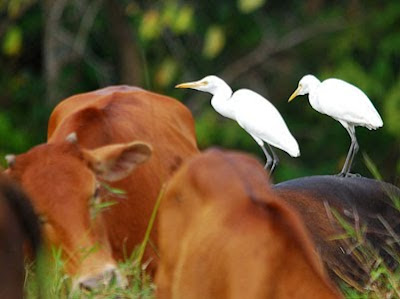Choo Eng and I decided to make a road trip up north to the tiny state of Perlis where there are quite a number of exciting species seen of late. Our first destination was the vast sugarcane plantation in Chuping and it is my first real birding excursion at this northern birding hotspot. It is quite an unfamiliar sight for me with rows sugarcane plants as far as the eye can see.

The distinct silhouette of a hovering kestrel caught our immediate attention. With a little patience and some rally-like driving, we managed to obtain better views of 2 female Common Kestrels that were hunting in the vicinity.





Some of the reasons why we visited this area was to try and confirm the Long-legged Buzzard that was seen here last week by Choo Eng but it was no where to be seen. Our search for the Blyth’s Pipit (a first record for Malaysia 

Our next destination was the nearby Bukit Jernih Forest Reserve. The spectacular limestone hills are an awesome sight.

However, we did not travel all the way here for the view. Despite Dave’s useful and precise information, we dipped out on the Dusky Craig-martin and the Racket-tailed Treepie. All was not lost when we were rewarded with a resident race of the Peregrine Falcon gliding alongside the face of the cliff.

At the entrance to the reserve, we dipped out again on the Pale-legged Warbler that was seen by Dave last week. A rather confiding Streak-eared Bulbul did its part to cheer us up. This species is only common in the northern Malaysia and the southern most limit of its range is near the northern border in my home state of Penang .

From the rocky outcrops of Bukit Jernih, we traveled to the tranquil blue waters at the edge of Timah-Tasoh Lake 

On the northern shores, we searched intensely for the Thick-billed Warbler, another rarity to our shores, with the help of Dave’s direction again. We did find the bush that Dave described but not the bird…

A rather confiding Bronzed Drongo help prevented us from leaving the vicinity empty-handed. Thanks, buddy…

We then decided to try out another section of the lake and all the disappointments so far almost disappeared all together. Not one but two Bronze-winged Jacanas were seen foraging along the lake side vegetation. It was just a month ago that I finally unblocked the Pheasant-tailed Jacana from my life list and now, I got the other only jacana that occurs here in Malaysia 





We decided to settle down at the edge of the lake and took all steps to blend into the environment hopping to get better images of the jacanas. However, they had other thoughts on their minds and maintained the distance.

In birding, there is a theory that when you finally see a lifer that has been eluding you for years and years, you are bound to come across that particular species more often from that faithful day onwards. I have personally experienced this quite a few times throughout my birding years and this time, the presence of 2 Pheasant-tailed Jacanas in the vicinity was the latest one to support this theory.

With dusk fast approaching, we went back to the sugarcane plantation to catch the harriers returning to their recently discovered roost. However, our journey was interrupted when a striking male Common Stonechat in almost full breeding plumage alighted invitingly next to the access road of the plantation. 

The roost is actually a fenced up cattle pasture which basically prevented any chances of obtaining clear, good shots of the harriers coming in. 

Like clock-work, the first few harriers floated in about the same time when Choo Eng was here the last time. 

We recorded about 100 harriers in total and they consist of Eastern Marsh-harriers like this juvenile…

And the smaller Pied Harriers which I was lucky enough to capture more images. This female slowly made its way to roost in the middle of the pasture…



With the light fast disappearing, accurate identification was greatly hampered but I’m pretty sure this is a juvenile Pied Harrier. In the end, the experience was quite a memorable one and the high congregation of these graceful raptors swooping in from all four corners of the plantation was simply breathtaking.







10 comments:
Superb flying shots. Thanks for sharing. While I was moaning that there are very few birders left in the field, now I know I missed a lot for not having the pertinent site.
Regards to Coo Eng too.
Thanks, Khong
Great shots and well documented. I'm still hoping to see the Jacanas.
You got much closer to the jacanas than I did! Nice shots,
Dave
Nice shot of the kestrel and the resident peregrine
the north is a wondeful spot for migratory birds, man... envy.
Wow!..100 harriers in one place.
Thanks all!
Very wonderful photographer,you did well.
Thanks, Pensionasuka
Post a Comment